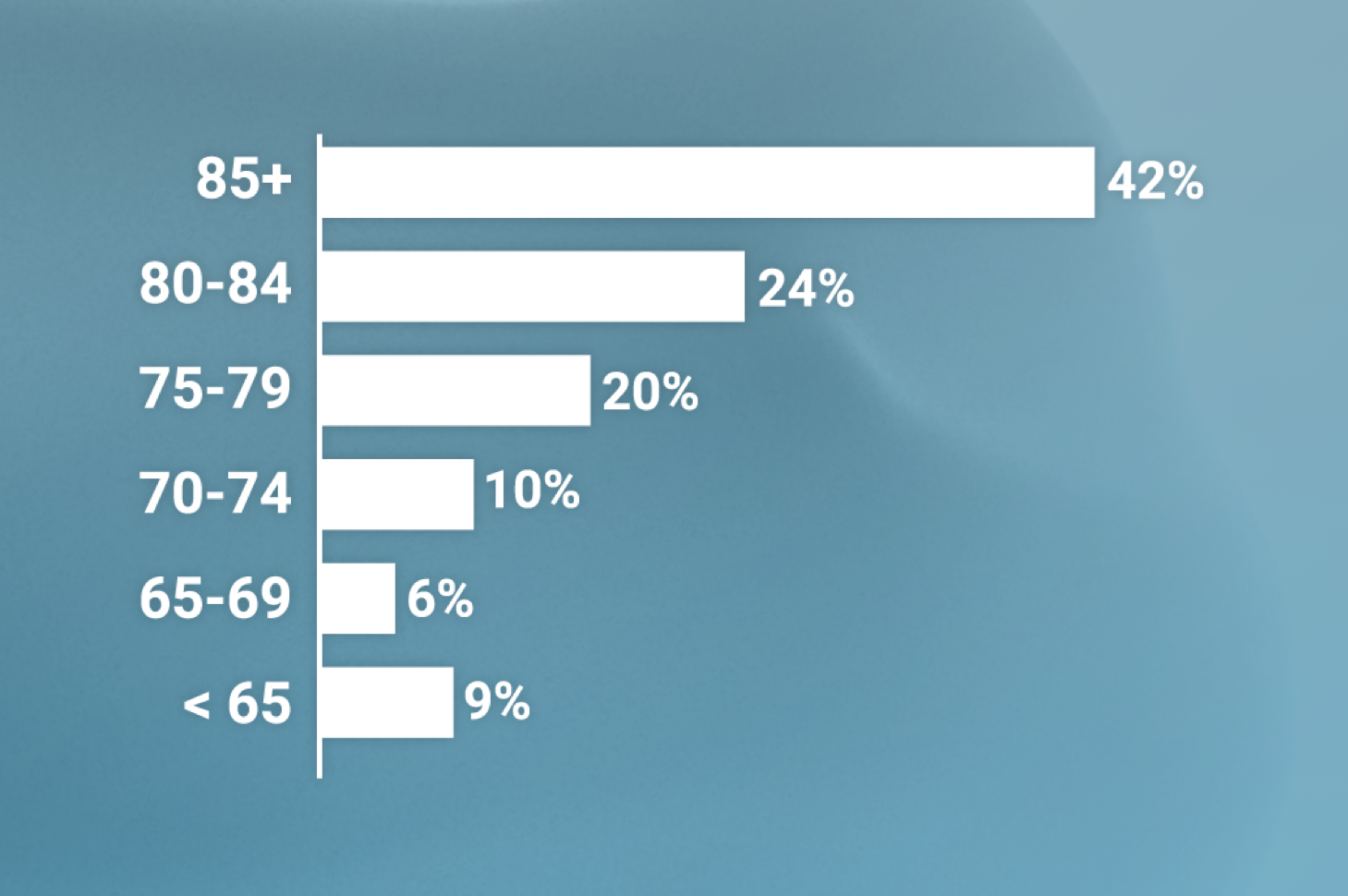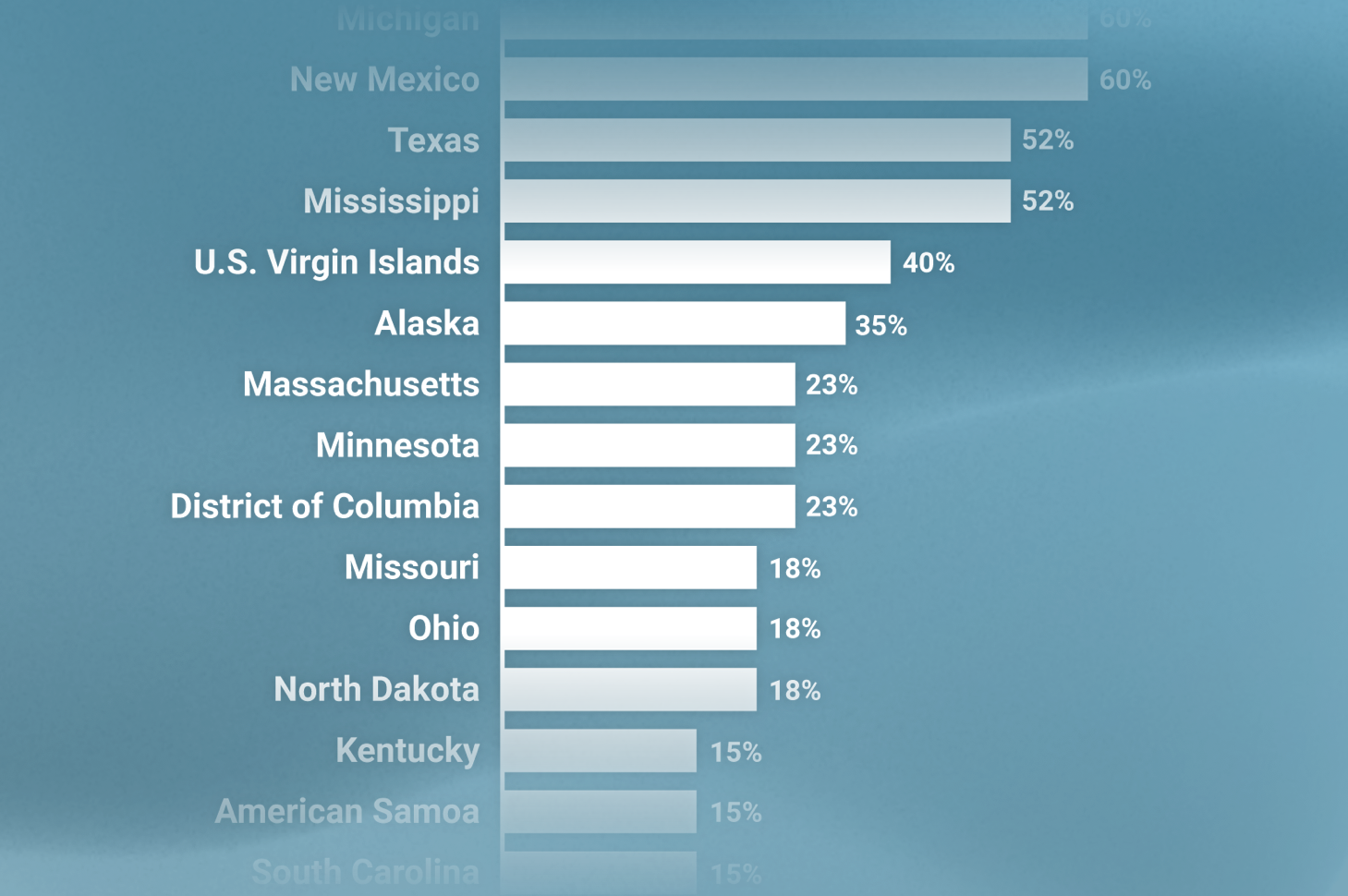Our estimates provide information about people with dementia diagnoses, diagnoses that may possibly be dementia or may not, or dementia-indicated drugs recorded in Medicare Fee-for-Service (FFS) payment claims or Medicare Advantage (MA) encounter records that occurred with a diagnosis.
In the future, the Dementia DataHub will expand to include additional data sources and outcome measures.
Contact Us
For questions or to access public use data, contact us at:
Prevalence
Measure Definitions: Beneficiaries with dementia.
Measure-Specific Data Source: For Medicare FFS, this includes data from inpatient, outpatient, hospice, skilled nursing facilities, home health agency, carrier, and hospice research identifiable file (RIF) claims. MA includes data from inpatient, institutional outpatient, skilled nursing facilities, home health, and professional RIF claims.
Denominator: Total number of beneficiaries who meet the inclusion and exclusion criteria in a year.
Prevalence Count: Total number of beneficiaries who meet the inclusion and exclusion criteria in a year and have dementia based on the case definition. This is the numerator of the prevalence rate.
Prevalence Rate: The percentage of beneficiaries who meet the inclusion and exclusion criteria in a year and have dementia based on the case definition. Calculated as prevalence count / denominator × 100.
Incidence
Measure Definitions: Beneficiaries identified with dementia in the observation year, with no diagnosis in the previous two years (numerator).
Measure-Specific Data Source: For Medicare FFS, this includes data from inpatient, outpatient, hospice, skilled nursing facilities, home health agency, carrier, and hospice RIF claims. For MA, this includes data from inpatient, institutional outpatient, skilled nursing facilities, home health, and professional RIF claims.
Denominator: Total number of beneficiaries who meet the inclusion and exclusion criteria in a year.
Incidence Count: Total number of beneficiaries who meet the inclusion and exclusion criteria in a year and are diagnosed for the first time with dementia based on the case definition. This is the numerator of the incidence rate.
Incidence Rate: Percentage of beneficiaries who meet the inclusion and exclusion criteria in a year and are diagnosed for the first time with dementia based on the case definition. Calculated as incidence count / denominator × 100.
Mortality
Measure Definition: All-cause mortality rate in a year among beneficiaries identified with dementia based on the dementia case definitions.
Measure-Specific Data Source: For the Medicare FFS and MA populations, the Master Beneficiary Summary File (MBSF) contains the date of death (BENE_DEATH_DT).
Denominator: Total number of prevalent cases of dementia based on the case definitions that meet the inclusion and exclusion criteria in a year.
Mortality Count: Total number of beneficiaries among the denominator defined above who died in the specified calendar year. This is the numerator of the mortality rate.
Mortality Rate: The percentage of beneficiaries among the denominator defined above who died in the specified calendar year. Calculated as mortality count / denominator × 100.
Measure-Specific Notes: This measure currently refers to all-cause mortality among the AD/ADRD population. Indicated cause of mortality can be identified in the National Death Index (NDI) segment of the MBSF (Medicare) and Medicaid Enrollee Supplemental File (Medicaid), which includes information on International Classification of Diseases, Tenth Revision (ICD-10) codes for cause of death, underlying conditions for cause of death, and CDC category code for cause of death. Specific cause of death information is not included in the mortality measure.
COVID-19
Measure Definition: COVID-19 cases identified among people with dementia based on the case definitions in a year.
Measure-Specific Data Source: For Medicare FFS, this includes data from inpatient, outpatient, hospice, skilled nursing facilities, home health agency, carrier, and hospice RIF claims. For MA, this includes data from inpatient, institutional outpatient, skilled nursing facilities, home health, and professional RIF claims.
Denominator: Total number of prevalent cases of dementia based on the case definitions that meet the inclusion and exclusion criteria in a year.
COVID-19 Count: Total number of beneficiaries with dementia who also received a diagnosis of COVID-19 on a claim or encounter record in any health care setting. This is the numerator of the COVID-19 rate.
COVID-19 Rate: Percentage of beneficiaries with dementia who also received a diagnosis of COVID-19 on a claim or encounter record in any health care setting. Calculated as COVID-19 count / denominator × 100.
Measure-Specific Notes: The Centers for Medicare and Medicaid Services (CMS)’s Medicare COVID-19 data snapshot methodology is used to calculate cases of COVID-19.* CMS’s COVID-19 data snapshot methodology analyzes beneficiaries enrolled in Medicare FFS or MA at any time since January 1, 2020. CMS calculates COVID-19 cases by identifying any beneficiary with a diagnosis code of B97.29 (January 1 to March 31, 2020) or U07.1 (April 1, 2020, and after) in any position on a claim or encounter record.
*CMS Preliminary Medicare COVID-19 Data Snapshot Methodology. Accessed via link: Medicare COVID Methodology (cms.gov)
Hospitalizations
Measure Definition: All-cause hospitalization rate of any hospitalization in a year among beneficiaries identified with dementia based on the dementia case definitions.
Measure-Specific Data Source: For the Medicare FFS population, this includes the RIF inpatient claims data. For the MA population, this includes the inpatient encounter data.
Denominator: Total number of prevalent cases of dementia based on the case definitions that meet the inclusion and exclusion criteria in a year.
Hospitalization Count: Total number of hospital discharges for any reason among beneficiaries diagnosed with AD/ADRD who meet the inclusion and exclusion criteria in a year.
Hospitalization Rate: The percentage of beneficiaries among the denominator defined above who were hospitalized in the specified calendar year. Calculated as mortality count / denominator × 100.
Measure-Specific Notes For both the FFS inpatient claims and MA inpatient encounter data, the Claim Source Inpatient Admission Code variable (CLM_SRC_IP_ADMSN_CD) was used to remove hospital transfers to avoid duplicate counting. In addition, the Patient Discharge Status Code variable (PTNT_DSCHRG_STUS_CD) was be used to identify hospital discharges on the inpatient claims/encounters.
Hospital Discharges
Measure Definition: Number of hospital discharges per 1,000 beneficiaries diagnosed with AD/ADRD during the year.
Measure-Specific Data Source: For the Medicare FFS population, this includes the RIF inpatient claims data. For the MA population, this includes the inpatient encounter data.
Denominator: Total number of Medicare beneficiaries (in thousands) diagnosed with AD/ADRD as defined by NORC who meet the inclusion and exclusion criteria in a year.
Numerator: Total number of hospital discharges for any reason among beneficiaries diagnosed with AD/ADRD who meet the inclusion and exclusion criteria in a year.
Source of Measure Specification: ResDAC maintains data documentation and codebooks with descriptions of the FFS and MA inpatient data variables.
Measure-Specific Notes: For both the FFS inpatient claims and MA inpatient encounter data, the Claim Source Inpatient Admission Code variable (CLM_SRC_IP_ADMSN_CD) will be used to remove hospital transfers to avoid duplicate counting. In addition, the Patient Discharge Status Code variable (PTNT_DSCHRG_STUS_CD) will be used to identify hospital discharges on the inpatient claims/encounters.
Short-Stay Nursing Facility Stay
Measure Definition: Percent of beneficiaries diagnosed with AD/ADRD that had a short stay in a nursing facility during the year.
Measure-Specific Data Source: The CMS Minimum Data Set (MDS) provides clinical assessment records for all residents in Medicare and Medicaid certified nursing homes. MDS data can be used to identify the duration of stays in these nursing facilities.1
Denominator: Total number of Medicare beneficiaries (both dual-eligible and non-dual-eligible) diagnosed with AD/ADRD as defined by the NORC algorithm who meet the inclusion and exclusion criteria in a year.
Numerator: Total number of beneficiaries diagnosed with AD/ADRD with a short-term stay in a nursing facility who meet the inclusion and exclusion criteria in a year.
Source of Measure Specification: The MDS User Manual2, along with methodologies from a study on long term nursing home services3, are leveraged as sources for the measure specifications.
Measure-Specific Notes: Short and long-term stays are determined based on the length of an episode of a beneficiary within the same nursing facility. A short-term stay is defined as an episode of less than or equal to 100 days in the nursing facility. An episode is a period of time containing one or more stays. An episode begins with an admission, which has a corresponding entry date, and ends with earlier of the end of the target period or a discharge with no return within 30 days. If an episode contains multiple stays (i.e., the beneficiary was discharged and returned within 30 days), the days outside of the nursing facility are not counted towards the length of the episode.4
Long-Stay Nursing Facility Stay
Measure Definition: Percent of beneficiaries diagnosed with AD/ADRD that had a long stay in a nursing facility during the year.
Measure-Specific Data Source: The CMS Minimum Data Set (MDS) provides clinical assessment records for all residents in Medicare and Medicaid certified nursing homes. MDS data can be used to identify the duration of stays in these nursing facilities.5
Denominator: Total number of Medicare beneficiaries (both dual-eligible and non-dual-eligible) diagnosed with AD/ADRD as defined by the NORC algorithm who meet the inclusion and exclusion criteria in a year.
Numerator: Total number of beneficiaries diagnosed with AD/ADRD with a short-term stay in a nursing facility who meet the inclusion and exclusion criteria in a year.
Source of Measure Specification: The MDS User Manual6, along with methodologies from a study on long term nursing home services7, are leveraged as sources for the measure specifications.
Measure-Specific Notes: Short and long-term stays are determined based on the length of an episode of a beneficiary within the same nursing facility. A short-term stay is defined as an episode greater than 100 days in the nursing facility. An episode is a period of time containing one or more stays. An episode begins with an admission, which has a corresponding entry date, and ends with earlier of the end of the target period or a discharge with no return within 30 days. If an episode contains multiple stays (i.e., the beneficiary was discharged and returned within 30 days), the days outside of the nursing facility are not counted towards the length of the episode.8
Payment
Measure Definition: Annual average all-cause Medicare payments across all health care settings among beneficiaries with dementia based on the case definitions. Available for Medicare Fee-for-Service beneficiaries only. Note that the payment amounts reflect total Medicare payments for beneficiaries with dementia. These payments are not restricted to dementia and may include payments for other medical conditions. Payments do not reflect incremental costs attributable to dementia.
Measure-Specific Data Source: For Medicare FFS, this includes data from inpatient, outpatient, hospice, skilled nursing facilities, home health agency, carrier, and hospice RIF claims. Payment information is not available in the MA encounter records because payment amounts from insurance companies to providers are considered proprietary information. As a result, this measure is not calculated for the MA population.
Denominator: Total number of beneficiaries in Medicare FFS who are defined as prevalent cases of dementia based on the case definitions and who meet the inclusion and exclusion criteria in a year.
Payment: Average Medicare FFS payment amounts for all causes calculated cross FFS beneficiaries with dementia based on the case definitions and who meet the inclusion and exclusion criteria.
Source of Measure Specification: The Chronic Conditions Warehouse (CCW) data documentation and codebooks describe the variables (i.e., CLM_PMT_AMT) that can be used to determine costs.*
Measure-Specific Notes: For all health care settings except inpatient, the Medicare FFS claim payment amount variable (CLM_PMT_AMT) from CCW’s RIFs is used. For Medicare FFS inpatient (hospital) claims, the total amount paid is calculated as the pass-through per diem amount (CLM_PASS_THRU_PER_DIEM_AMT) multiplied by the number of Medicare-covered days (CLM_UTLZTN_DAY_CNT) plus the claim payment amount (CLM_PMT_AMT).
If the cost measure includes patient out-of-pocket payments (patient responsibility), additional data fields are needed to calculate the deductible amount and coinsurance liability amount. For Medicare FFS claims, the data fields to calculate patient responsibility vary by type of claims file.
*Medicare FFS Claims Codebook. Accessed via link: https://www2.ccwdata.org/documents/10280/19022436/codebook-ffs-claims.pdf




